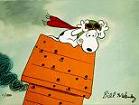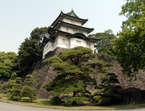Grotius
Posts: 5798
Joined: 10/18/2002
From: The Imperial Palace.
Status: offline

|
You've been playing AE longer than me, so take my comments with a grain of salt, but here's my take.
I don't think the failure to use TRACOM alone explains your woes. It certainly would help a bit, and it's not hard to do. It's a no-brainer for high-experience pilots sitting around in rear-area units, such as restricted-command squadrons with lots of high-experience pilots. If you have any units like that, move most (not all) to TRACOM and fill them up with untrained pilots. (Leave a few highly-trained pilots in the squadron to train the untrained pilots joining them.) The guys in TRACOM will train newbies a bit more efficiently, and your squadron will train new pilots who can eventually be moved to general or group reserve, for transfer to other squadrons.
You mentioned slow-learning fighter pilots. Are they at least improving their "Air" skills? Those skills should be rising pretty fast, even if overall experience isn't. Experience is important, as it governs things like the possibility of operational loss or crash landings. But it's not the sole all-important variable as it was in WITP. Also, what % of Training are you using? You should set it pretty high (70-80% maybe), but be prepared to reduce that percentage, or stand them down for a turn, if you see morale or fatigue problems.
I don't know if the Allies have any tiny carrier-capable squadrons that are assigned to rear areas. Japan does, and a standard tactic for us is to expand them by placing them on a CV or CVL for a turn and choosing 'expand to fit ship.' Then we remove them, fill them with rookie pilots, and let them train like crazy.
On combat, I'll have to check my bombers, but I recall seeing experience increases with fighter pilots engaged in sweeps, even for very high-experience fighters. In fact, I'm pretty sure I've seen experience increases without commensurate skill increases -- the very opposite of what I usually see from training alone. Bombers flying ASW and Search improve those skills steadily, but not so much experience, which increases (by design) more slowly than skills.
One consolation for you about Scenario 2. It certainly does give Japan a bigger pool of pilots -- but that has a hidden cost, one that I wasn't aware of until yesterday. The Japanese player pays a hefty "heavy industry tax" on all those extra pilots -- almost twice what Japan pays in Scenario 1. By 1944, Japan has to fund 111,000 heavy industry a *month* in pilot-training costs, with no apparent way to reduce that cost -- Japan is stuck with thousands of useless pilots she'll never use. I'm still crunching numbers, but my initial take is that the "tax" on all those unused pilots more than cancels out the extra resources/oil/supply/fuel Japan gets at the start of Scenario 2. I'd frankly rather be rid of half of them -- they get me nothing and cost me a ton.
Apart from that, you're right that Scenario 2 gives Japan some more toys. Japan gets a few more air squadrons and aircraft too, though not a huge increase over Scenario 1. I see only a couple minor extra ground units (e.g., militia in Vietnam), and some extra escorts and merchant ships. I guess there's now the possibility of building both Musashi and a Taiho-class version of Shinano, plus some more escorts, but I'm not sure I see any other significant increase in ship availability (but I might be missing something). Still, if Japan can use those extra toys to conquer more than she would have otherwise, then I suppose those conquests will help pay for the higher pilot-training "tax."
_____________________________
|
 Printable Version
Printable Version


















 New Messages
New Messages No New Messages
No New Messages Hot Topic w/ New Messages
Hot Topic w/ New Messages Hot Topic w/o New Messages
Hot Topic w/o New Messages Locked w/ New Messages
Locked w/ New Messages Locked w/o New Messages
Locked w/o New Messages Post New Thread
Post New Thread